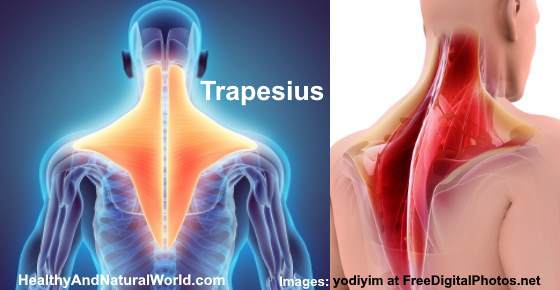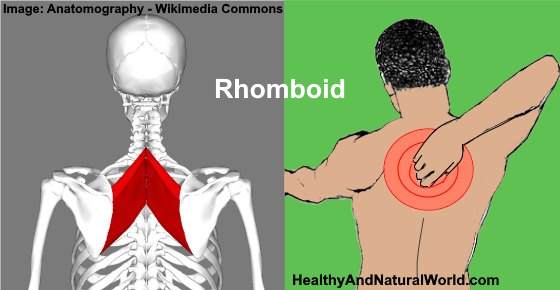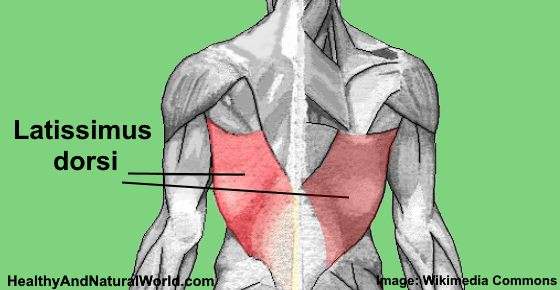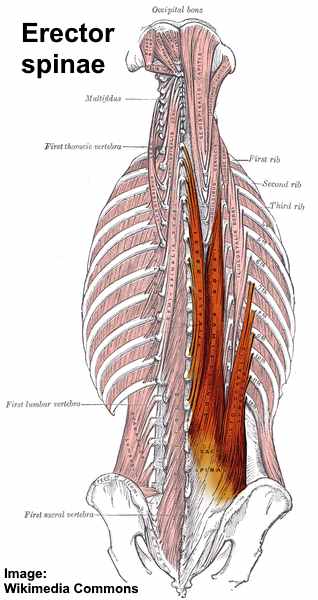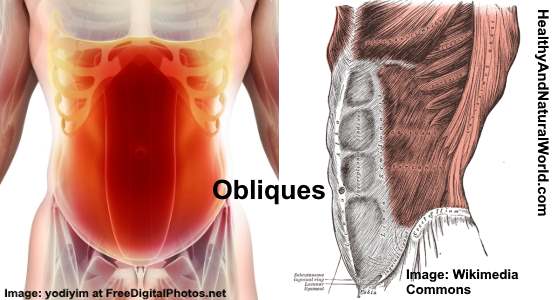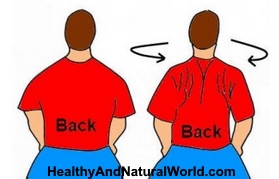Effective Treatments for Pulled, Strained or Torn Back Muscle
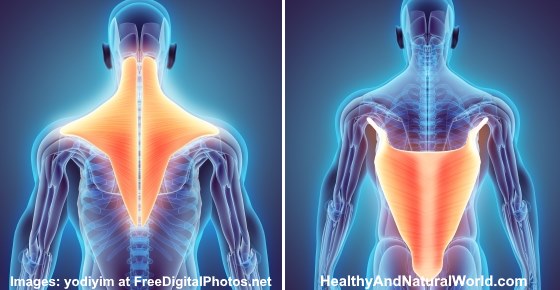
Most people will suffer from back pain caused by a pulled, strained, or torn muscle in their back. Your back contains muscles, ligaments, and tendons that support your upper body, give you strength for performing tasks and help move your neck, shoulders, and arms. Pulling, straining, or tearing a muscle can cause shooting severe pain if you suffer an acute injury. Or, back muscle strain caused by overuse can cause deep aches and chronic pain that can affect your daily activities.
Treating muscle pain in your back usually requires getting plenty of rest to prevent irritating the inflamed tissue even more. Also, hot and cold treatment can be effective in speeding up the recovery time by helping to reduce swelling and inflammation. Pulled back muscle treatments also include essential oils that are effective to treat pulled, torn, or strained back muscles as well as Epsom salt bath.
In this article, you will learn about the best and most effective treatments for strained lower back muscles, pulled or torn upper and middle back muscles, and how to treat back pain in general.
First, it’s important to know something about the muscles in your back.
Muscles in Your Upper, Middle, and Lower Back
Your back from the nape of your neck to the top of your buttocks contains many important large muscles. In the center of your back is your spine which is connected by tendons to many of your back muscles. You also have muscles that connect to your scapulae (shoulder blades) and your pelvic bones in your hips.
Back muscles
Your back contains 5 important muscles that are necessary for body movement and strength.
Trapezius. Your trapezius muscles start at the back of your neck and end about the middle of your back and are found on either side of your spine. The trapezius muscles are a triangle shape and connect your spinal column to your shoulder blades.
The main function of the trapezius muscles is to move your shoulder blades and assist with arm movements. Pulled, strained or torn trapezius can cause varying degrees of pain in your neck and back of your head, shoulders, and muscles between your shoulders.
Rhomboid. Rhomboid muscles are diamond-shaped muscles that are located on either side of your thoracic spine (upper spine). Both rhomboids (major and minor) connect your spine to your shoulder blades. A pulled or strained rhomboid will cause pain and discomfort on one or both sides of your upper back.
Like the trapezius muscles, rhomboids control movement of the scapulae. For example, when you squeeze your shoulder blades together or bring your shoulder together at the front of your body, it’s your rhomboids that move your shoulder blades.
Latissimus Dorsi. One of the most important muscles in your back are the latissimus dorsi muscles. These are the largest and strongest muscles in your back and are often referred to as “lats.”
Latissimus dorsi connects your spine, hip bone, and humerus (upper arm bone) and are important muscles when lifting heavy objects and supporting your upper body. For example, when you push yourself up from a chair, you use your latissimus dorsi muscles. Pain in your latissimus dorsi muscles will be felt in your shoulder, upper arm, or middle or lower back if you strain or tear them.
Erector spinae. Erector spinae is a group of muscles that run vertically from your lumbar region (lower back) to your thoracic region and to your neck. The erector spinae are the longest muscles in your body and are found on either side of the spine.
The erector spinae muscles help to keep your back straight and assist in rotating your back. Very often, incorrect posture or repetitive lifting can strain and even tear your erector spinae muscles. This can cause lumbago (lower back pain) or pain in the thoracic region of your back.
Obliques. Your obliques form part of your core muscles and are found in your lower back, around the side of your waist, and abdominal wall. The obliques support upper body movement and also assist walking and running. Pulled, torn, or strained obliques generally cause pain on the side of your abdomen and lower chest.
Ligaments in back
Ligaments also play an important role in stabilizing the spine and proper upper body movement. Ligaments are like long cords that connect the ends of bones to a joint and keep muscles in their proper place.
For example, when you bend over, the ligaments that run down the length of your spine stretch and prevent damage to your spine. Ligaments are also important in keeping proper posture and if you don’t have good posture habits, ligaments can become damaged and start to ache.
If you overstretch a ligament in your back, this is called a sprain and it can result in pain anywhere along the length of the ligament.
Tendons
Tendons are the fibrous tissue that connects muscles to bones. Tendons usually become strained or even torn along with muscle if you strain, twist, or pull your back.
Back Muscle Strain vs. Pulled Back Muscle vs. Torn Muscle in Back
What is the difference between a strained, pulled, and torn back muscle? Sometimes, these terms are used interchangeably, but there is a subtle difference.
A strained back muscle is a general term to describe damage to the muscle or tendon tissue. Doctors from the American Academy of Orthopaedic Surgeons (AAOS) say that a back muscle strain can happen over time because of repetitive actions that overstretch or damage the muscle. Or, the strain can be an acute injury caused by falling, twisting, or suffering trauma to the back.1
A pulled muscle in your back is an example of an acute muscle strain that causes mild to severe back pain. Doctors from MedlinePlus say that pulling a muscle or tendon can result in a muscle strain. This can cause muscle spasms, swelling, and make moving the muscle difficult.2
A tear in a back muscle is a more serious injury that results in some of the tissue tearing from the connective joint or tendon. Doctors from the AAOS say that a torn muscle will cause significant swelling and will probably result in the affected area becoming immobile.1
What Does Pulled, Strained, or Torn Muscle in Back Feel Like?
The symptoms of a strained, pulled, or torn muscle depend much on the cause of the injury and the extent of muscle damage. Doctors from the Mayo Clinic say that a strained muscle will feel painful and sore and you may notice some swelling around the injured area.
Dr. Lawrence Gulotta, a sports injury specialist, says that muscle injuries can be divided into 3 grades:3
Grade 1 strained back muscle. This will cause mild pain as just a small percentage of muscle tissue is damaged. You will only have minimal loss of motion in your back. Injuries that strain back muscles take about 2-3 weeks to heal if they are treated properly.
Grade 2 pulled back muscle. Severely pulling a back muscle will result in intense pain and can also cause some of the back muscles to tear. A severely pulled trapezius, rhomboid, or latissimus dorsi muscle will take between 2 and 3 months to completely heal.
Grade 3 torn back muscle. If the back muscle gets completely torn or ruptures, this will cause you to feel severe pain and discomfort. It will take many months to heal the torn muscle and in some cases, may take surgery to repair the muscle tear.
Causes of Pulled, Torn, or Strained Muscle in Back
Unfortunately, all of us at some point in our lives will suffer from some degree of upper back pain, middle back pain, or lower back pain. In fact, according to a report published in 2014, lower back pain is the number one cause of lost days at work. The report described back pain as a major health condition that affects about 10% of people and is a leading cause of disability worldwide.4
Injury
Injury to your back can cause back muscle strain or a pulled back muscle. For example, Dr. William Blahd on WebMD says that upper and middle back pain can be caused by injury to the muscles and ligaments in the thoracic region.5
Dr. William Shiel on eMedicineNet says that injury to the muscles in your lower back is also to blame for pain in the lumbar regions as well as the trapezius and rhomboid muscles.6
Extreme physical exertion
If you have pulled a muscle in your back, it could be due to extreme physical exertion. For example, running long distances, performing manual work tasks, or strenuous activity can all strain, pull, or even tear back muscles.
According to Carol DerSarkissian on WebMD, extreme physical exertion can cause low back strain on the left side or right side. Because straining your back can also damage nerves, tendons, and ligaments, you can also feel pain from the cervical area (at the base of your skull) right through the thoracic region to your lumbar area.7
Lifting heavy objects
Lifting heavy objects can strain your back muscles, especially your lower back and trapezius muscles. If you bend from your back when lifting heavy items, you risk putting undue pressure on the tendons and muscles in your back.
Dr. William Blahd on WebMD says that pulled muscles in the lower back and upper back are often caused by suddenly lifting something heavy. The back muscle strain could also be a result of frequently lifting heavy items, as small tears in the back muscles don’t have time to heal before being damaged again.8
Overstretched muscles
If you overstretch your trapezius muscles when lifting items or throwing objects you could pull a muscle in your upper back.
Doctors from Bupa in the United Kingdom say that overstretching any of your back muscles could result in a pulled muscle or muscle tear. You should, if possible, warm up before lifting heavy items or playing sports to avoid straining or pulling muscles in your back.9
Sudden movements
Sudden body movements with your arms or while running could result in pulled back muscles. For example, taking part in sports that involve throwing or using a racket or bat can easily tear trapezius or latissimus dorsi muscles in your middle and upper back.
For example, doctors from AAOS say that trapezius muscles and rhomboids are required to throw objects with force. If this is done in a jerking motion or if the muscles and tendons have not been warmed up, you could pull a muscle in your left upper back or right upper back.10
Also, according to doctors from the Cleveland Clinic, your lower back gets put under enormous pressure while running and walking. If you twist your body suddenly or fall, you could strain the muscles and tendons in your lower back very easily.11
Poor posture
Poor posture while standing or sitting can strain muscles in your back resulting in stiffness, discomfort, and pain in your lumbar region or thoracic region. Slouching in your chair, being hunched over your desk while working, or standing with rounded shoulder can cause excessive pressure and strain on your lower and middle back muscles.
According to a sports injury clinic, poor posture is often to blame for strained back muscles. Not standing properly or sitting correctly causes structural changes and imbalances in your back muscles. This causes some muscles to tighten and others to weaken. The result is stiffness, pain, and knots in your shoulders that can lead to chronic back pain.12
Weight gain or being overweight
Being overweight or putting on weight can put you at risk of pulling a muscle in your left lower back or right lower back. Carrying around extra weight also puts a strain on your lower back as your lumbar muscles have to work harder to keep your body stable.
A study published in the American Journal of Epidemiology reported that there is a proven link between obesity and low back pain. It was found that the heavier a person was, the greater low back pain they felt. The report concluded that being overweight is the main reason for obese people seeking treatment for chronic low back pain.13
Natural Treatments for Pulled, Torn, or Strained Back Muscle
With proper home remedies, it’s possible to successfully treat pulled, torn, or strained back muscles at home. Here are some of the best treatments for strained muscles in your back to help reduce muscle strain recovery time.
R.I.C.E.
R.I.C.E. is an acronym for Rest, Ice, Compression, and Elevation. This is one of the best ways to treat an acute pulled or torn trapezius, rhomboid, or Latissimus dorsi muscle and help speed up recovery.
According to Dr. William Blahd on WebMD, using the RICE method helps to control swelling by restricting blood flow to the injured area. It also helps to numb the pain that damaged nerves cause and promote quicker healing. However, for the muscle strain treatment to work, you have to apply it as soon as possible after the injury.14
How to use:
First of all, you have to make an ice pack to reduce swelling in a muscle strain. You can do this by putting plenty of crushed ice in a sealable plastic bag (or use a bag of frozen vegetables) and then wrap in a towel.
Use the RICE method this way to help promote healing after pulling or straining a back muscle:
- Rest the back muscles by stopping any activity that puts extra strain on your upper back or lumbar region.
- Ice the pulled, strained, or torn back muscles to stop swelling and reduce the pain. Apply the ice pack for up to 20 minutes every hour on the first day, then 3 to 4 times a day on the second day.
- Use a compression bandage to wrap the affected area to prevent movement and help prevent swelling.
- Elevation of the affected area is important to prevent blood flow to the injured area on your back.
This method should be used for the first two days after the initial back injury. After this time, if you still have pain and the swelling has gone down, you should use a heat pack.
Heat
Heat is a great way to relieve muscle soreness that has been caused by pulling, straining, or tearing a back muscle. Heat can also help to get rid of pain while a grade 2 or grade 3 muscle strain is healing. Heat is also an effective pain-relieving treatment for chronic back pain.
Dr. Jan Sambrook on Patient.info recommends using heat packs to treat acute back muscle strains and chronic back pain. Heat helps to boost blood circulation to the injured muscle and speeds up the healing process. Heat also relaxes muscles to stop cramping and muscle spasms.15
How to use heat for pulled or torn back muscle pain:
It is very easy to make your own heat pack at home and relieve muscle pain in your lumbar region or thoracic area. This is what you should do:
- Fill an old sock with rice almost to the top and leave a few centimeters for tying.
- Tie the sock shut and microwave it on full power for 1-2 minutes.
- Carefully remove the sock being careful if it is too hot.
- Wrap the rice-filled sock in a warm moist towel and apply to the painful pulled or strained back muscle.
- Use 3 or 4 times a day for 20 minutes to help boost healing of a strained back muscle.
- If you need to, place the rice heat pad in the microwave and heat for one minute.
Epsom salt bath to relieve strained muscle in the back
One way to relax tense muscles and also relax your mind to ease muscle tension is to take a warm bath of Epsom salt.
Dr. Carol DerSarkissian on WebMD says that an Epsom salt bath can help to heal a pulled or strained muscle and ease many aches and pains. It is thought that magnesium and sulfate from the salts penetrate the skin and help relax stiff muscles.19
How to use Epsom salt for muscle repair:
To make a healing bath with Epsom salt to get rid of pain caused by pulled back muscle, this is what you should do:
- Fill your bathtub with very warm (but not hot) water and add 1 to 2 cups Epsom salts.
- Soak in the bath water for 20 minutes to allow the salts and minerals ease muscle tension in your back.
- Rinse off in the shower and dry yourself.
- Take the bath up to three times per week until your sore back muscles are healed and are no longer sore.
Essential oil soothing muscle rub
Another way to help take the pain out of strained back muscles is to make your own soothing essential oil muscle rub. Many essential oils have properties that relax damaged and irritated muscles and tendons. Also, the massaging process helps to stimulate blood flow and reduce the time a pulled muscle takes to heal.
For example, a study in 2016 found that a mixture of lavender, rosemary, and peppermint essential oils helped to reduce chronic shoulder pain in 30% of people who used it.16
How to use essential oils for back pain relief:
If you have pulled a muscle in your back, you should make your own pain-relieving massage oil to help heal a pulled back muscle. This is what you should do:
- Mix 4 drops each of rosemary, peppermint, and lavender essential oils with 1 oz. carrier oil such as sweet almond oil.
- Massage the therapeutic essential oil mix into your rhomboids, trapezius, or latissimus dorsi muscles to ease the strain.
- Use twice a day, and to get rid of knots in your back continue using until your back pain has eased and you no longer have symptoms of a pulled or torn muscle.
Exercises for pulled back muscles
If you have pulled or torn a back muscle, it’s important to regularly exercise your back muscles to strengthen them and prevent further injury. If the muscle or tendon injury caused a lot of tissue damage in your back, you will have to wait until swelling and pain have gone before starting gentle exercises.
How to strengthen your upper back:
Here is one exercise to strengthen your rhomboids or trapezius muscles.
- Sit with your back straight, shoulders back, and chin slightly tucked in.
- Gently squeeze your shoulder blades together as far as possible to tighten your trapezius and rhomboids.
- Hold for 5 seconds and then repeat 10 times to help keep your upper back muscles flexed and supple.
How to strengthen your lower back:
Here is a great, easy exercise you can do at home to strengthen your lower back and prevent recurring episodes of back pain.
- Go on your hands and knees with your hands on the floor shoulder-width apart.
- Lift one leg and extend it behind you and at the same time extend your opposite arm so it is in front of you.
- Keep your hips level and hold for 5 seconds.
- Do with the other leg and arm.
- Repeat 10-12 times for each leg and arm.
This will help to improve your balance and tone your lower back muscles to prevent low back pain.
Other Exercises for strengthening your back
You can also find other excellent exercises you can do at home to reduce back pain (including illustrations).
You can also check my other exercises to improve your posture.
Low back pain can also be caused by your sciatic nerve. If you have pain in your lower back and pain down your left leg or right leg, then why not try some great yoga stretches to relieve sciatic pain, tennis ball massage therapy, and foam roller exercises for sciatic and back pain. All these exercises include video or detailed illustrations for easy implementation at home.
Reduce stress
Reducing stress naturally is an effective way to reduce the effect of chronic back pain on your body. Stress tenses back muscles and can also put you at greater risk of straining or pulling a muscle in your back.
Doctors from WebMD say that deep breathing and relaxation techniques using meditation for stress can help many people reduce upper and middle back pain.5
For some easy ways to help cope with stress better, please read my article on natural remedies for anxiety and stress.
Recovery Time for a Pulled Muscle in Back
Back muscle strain recovery time greatly depends on the extent of muscle tissue damage that you had. So, knowing how long a pulled muscle lasts can be difficult to specify.
However, Dr. Lawrence Gulotta from the Hospital for Special Surgery says that the length of time pulled or torn muscle takes to heal is as follows:3
- Mild back muscle strain should heal in 2-3 weeks if you apply hot and cold treatment to the muscle injury.
- A severe back strain or pulled muscle that shows signs of swelling may take between 2 and 3 months to heal completely and be free of pain.
- A complete back muscle tear may need surgery to reattach the muscles and tendons.
Back Muscle Strain – When to See a Doctor
According to the U.S. National Institutes of Health, in most cases, you can treat pulled and strained back muscles at home. Home remedies help to improve the healing time and you should be pain-free quicker.
However, there are some conditions that require you to seek medical advice for your pulled upper back muscle or low back pain.17, 18 These are:
- Tingling or numbness in your back, arms, or legs.
- You suffer intense back pain after a severe trauma like a car accident or falling.
- You notice weakness or pain in your legs.
- You have signs of a fever.
- You lose control of your bladder or bowels.
- Severe back pain, especially low back pain that wakes you up in the middle of the night.
Read my other related articles:
- Shoulder Blade Pain: Possible Causes and Home Treatments
- How to Treat Stiff Neck In One Minute (or Less)
- When to Use Cold or Heat Therapy for Pain, Stiff Muscles and Joints
- The Top 17 Essential Oils for Muscle Pain Relief
Article Sources

